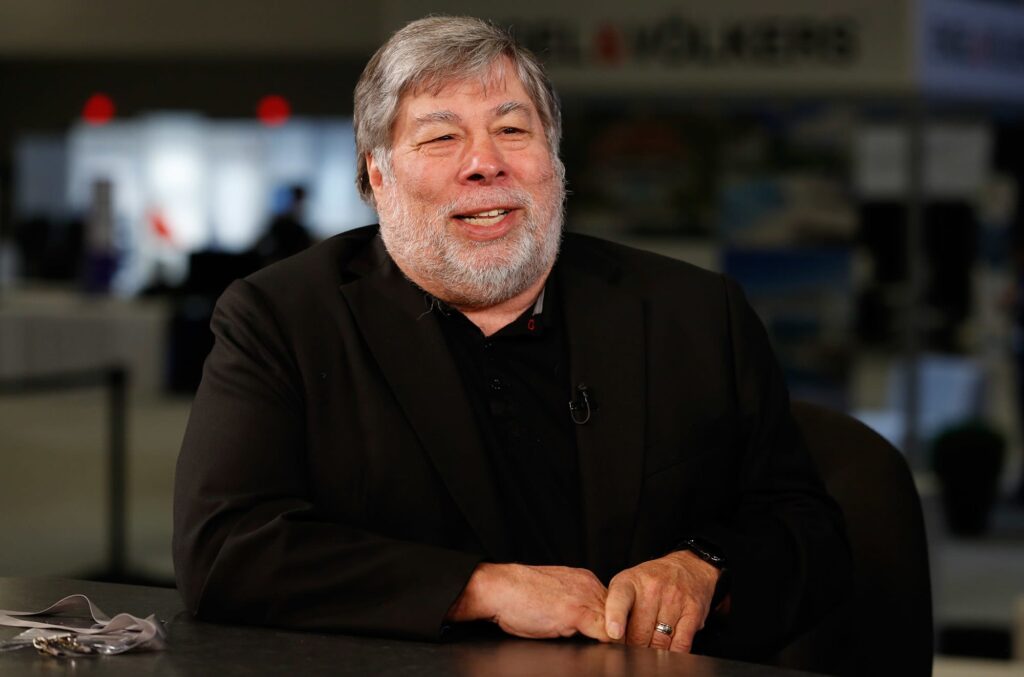
Stephen Gary “Woz” Wozniak is a Polish-American inventor, programmer, an electronics engineer, and technology entrepreneur who is the co-founder of Apple Inc., a company that designs, develops, and sells consumer electronics, computer software, and online services.
Early life and education
Steve Wozniak was born on August 11, 1950 in San Jose, California. Wozniak is the son of Margaret Louise Wozniak and Francis Jacob Wozniak. Wozniak’s name on his birth certificate is Stephan, but his mother intended to spell it as Stephen, which is what he uses.
In 1968, Wozniak graduated from Homestead High School. The University of Colorado Boulder expelled Wozniak during his first year in college for sending prank messages on the university’s computer system and returned to the Bay Area in 1969. During this time, Wozniak, along with his friend Bill Fernandez, designed and built a “Cream Soda” computer. Wozniak later re-enrolled at De Anza College and transferred to the University of California, Berkeley in 1971.
The Beginning of Apple
Before focusing his attention on Apple, Wozniak was employed at Hewlett-Packard (HP) where he designed calculators. It was during this time that Wozniak befriended Steve Jobs. Wozniak and Jobs became friends when Jobs worked for the summer at HP, where Wozniak too was employed, working on a mainframe computer.
In 1973, Jobs was working for Atari, Inc., an arcade game company in Los Gatos, California. Wozniak was assigned to create a circuit board for the arcade video game Breakout. In 1975, Wozniak started designing and developing the computer that would ultimately make him famous, the Apple I. On June 29 of that year, Wozniak tested his first working prototype, performing a few letters and working sample programs. With the Apple I, Wozniak and Jobs were mainly working to impress other Palo Alto-based Homebrew Computer Club members, a local group of electronics hobbyists interested in computing.
In 1976, Wozniak developed the Apple I design. Wozniak alone designed the hardware, circuit board designs, and operating system for the computer. Wozniak offered to HP the design while working there, but the company denied him on five various occasions. Jobs instead had the concept to market the Apple I with Wozniak as a completely assembled printed circuit board. At first, Wozniak was skeptical; however. Jobs convinced him.
Jobs sold his Volkswagen van, as well as Wozniak’s HP scientific calculator, raised $1,300, and assembled in Jobs’ bedroom their first boards; and later when there was no space left in his bedroom, in his garage. Wozniak’s apartment in San Jose was loaded with electronic devices, monitors, and some computer games that Wozniak had developed. They were able to sell Apple I for $666.66. Wozniak and Jobs sold their first 50 system boards to Paul Terrell, who happened to open his new computer shop called the Byte Shop in Mountain View, California.
On April 1, 1976, Jobs and Wozniak, along with Wayne, an administrative supervisor formed, whose participation in the new venture was short-lived, formed Apple Computer (now called Apple Inc.). Wozniak quit from his job at Hewlett-Packard and became Apple’s vice president in charge of research and development. Wozniak and Jobs decided on the name “Apple” shortly after Jobs returned from an apple orchard in Oregon.
Wozniak designed the Apple II after the success of the Apple I, the first personal computer that had BASIC programming language built-in and the capability to display color graphics. During the design stage, Jobs argued to Wozniak regarding having Apple II with two expansion slots, while the latter required eight. After a heated argument, they decided to go with eight slots after Wozniak threatened Jobs to get himself another computer.
At the West Coast Computer Faire in 1977, Jobs and Wozniak launched the Apple II. The Apple II became one of the world’s first highly successful mass-produced personal computers. Apple went public in 1980, to instant and significant financial profitability, making Jobs and Wozniak both millionaires. Wozniak had a huge influence over the project, during the early design and development phase of the Macintosh 128K until 1981.
Parting Ways
In the mid-1980s, Wozniak invented a proprietary bit-serial peripheral bus, the Apple Desktop Bus, introduced on many later Macintosh and NeXT computer models. However, even with success, Wozniak helped design at Apple, he thought the company was preventing him from being who he aspired to be. Wozniak enjoyed engineering more, not management. Although its products contributed around 85% of Apple’s sales in early 1985, the company’s annual meeting in January 1985 did not mention the Apple II division or employees, a move that frustrated Wozniak. As more engineers entered the flourishing company, Wozniak believed he was no longer needed there; and by early 1985, he left Apple again. Wozniak then sold the majority of his assets.
Wozniak chose to remain from the official employee list and continues to represent the company in interviews or at events, even after leaving Apple as an active employee in 1985. Wozniak receives a stipend from Apple for this role, figured to be $120,000 per year. Wozniak is also an Apple shareholder.
Post Apple Career
After his career at Apple, Wozniak enrolled to complete his degree at UC Berkeley. Wozniak enrolled under the name Rocky Raccoon Clark because his name was well known at this point, which is the name registered on his diploma. In 1985, Wozniak founded CL 9, which developed and produced the first programmable universal remote control to market in 1987.
In 2001, Wozniak established Wheels of Zeus, to design wireless GPS technology. In 2002, Wozniak joined Ripcord Networks, Inc.’s board of directors, joining Ellen Hancock (Apple alumni), Mike Connor, Gil Amelio, and Alex Fielding (co-founder of Wheels of Zeus), in a new telecommunications venture. Wozniak joined Danger, Inc., the maker of the Hip Top as the board of directors later the same year.
In October 2017, Wozniak founded Woz U, an online educational technology service for independent students and employees. As of December 2018, Woz U was licensed as a school with the Arizona state board.